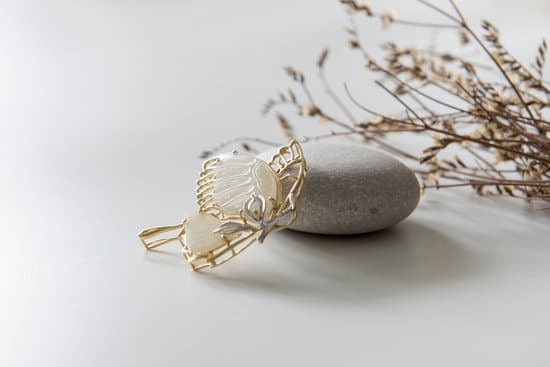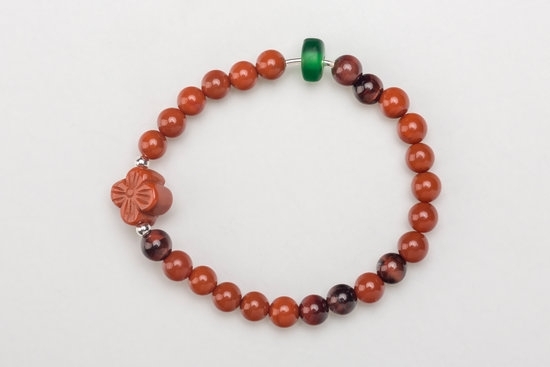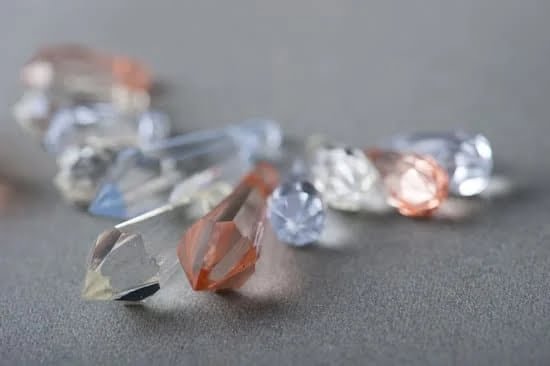The history of Italian micro mosaic jewelry is a fascinating tale that spans centuries, with origins dating back to ancient Roman times. This intricate art form has seen a renaissance in the 18th and 19th centuries, influencing fashion and design across Europe. The technique behind Italian micro mosaic jewelry is delicate and complex, requiring skilled artisans to create stunning pieces that have stood the test of time.
Italian micro mosaic jewelry holds a prominent place in the world of fashion and design, with its influence still felt in modern times. Notable artisans and designers have made significant contributions to this art form, perpetuating its enduring legacy. Collectors of Italian micro mosaic jewelry cherish these precious pieces, taking great care in preserving their beauty for future generations to admire.
In this article, we will delve into the origins and evolution of Italian micro mosaic jewelry, exploring the intricate technique behind its creation and the impact it has had on fashion and design throughout history. Additionally, we will shine a spotlight on notable artisans and designers who have left their mark on this timeless art form, as well as provide tips on collecting and caring for these exquisite works of art.
Join us as we uncover the enduring legacy of Italian micro mosaic jewelry.
The Origins of Micro Mosaic Art in Italy
The art of micro mosaic originates from ancient Rome, where artisans would meticulously arrange tiny pieces of colored glass, known as tesserae, to create intricate designs and images. The technique was used to decorate floors, walls, and ceilings in both public and private buildings. However, it wasn’t until the 18th century that micro mosaic art truly came into its own in Italy.
Artistic Renaissance in the Vatican
During the 18th century, there was a renewed interest in micro mosaic art thanks to the patronage of Pope Clement XI and subsequent popes. The Vatican Mosaic Studio, established in 1727 by Pope Benedict XIII, became a center for creating exquisite micro mosaic pieces. These stunning artworks were often gifted to European royalty as a symbol of wealth and power.
The Gran Tour Influence
It was during the Grand Tour – a traditional trip around Europe commonly taken by young nobles – that Italian micro mosaic jewelry gained popularity. Travelers would visit Italy and bring back these meticulously crafted pieces as souvenirs. The vibrant colors and detailed scenes captured within the tiny glass tiles quickly made them sought-after treasures throughout Europe. This marked the beginning of Italian micro mosaic jewelry’s influence on fashion and design beyond Italy’s borders.
Overall, the history of Italian micro mosaic jewelry is one that spans centuries and has left an indelible mark on art, design, and fashion across the globe. With its origins in ancient Rome and its resurgence during the Renaissance period, this intricate art form continues to captivate collectors and enthusiasts today.
Renaissance of Micro Mosaic Jewelry in the 18th and 19th Centuries
During the 18th and 19th centuries, Italian micro mosaic jewelry experienced a significant renaissance, becoming popular among the European elite and aristocracy. This period marked a resurgence in the craft of creating intricate micro mosaics, with artists and artisans dedicated to reviving this ancient art form. The demand for micro mosaic jewelry grew rapidly, with travelers to Italy bringing back these exquisite pieces as cherished souvenirs.
The intricate designs and impeccable craftsmanship of Italian micro mosaic jewelry captured the imagination of Europeans during this period. Royalty and nobility sought after these pieces as symbols of wealth, sophistication, and cultural appreciation. The popularity of micro mosaic jewelry spread throughout Europe, influencing fashion trends and inspiring imitations in other countries.
The technique of creating Italian micro mosaic jewelry also saw developments during this time, with artisans experimenting with new methods and incorporating different materials into their pieces. This era marked a golden age for micro mosaic artistry, with craftsmen honing their skills to create increasingly intricate designs that showcased the beauty and precision of this ancient technique.
- Increased demand for Italian micro mosaic jewelry
- Influence on fashion trends and design
- Development of new techniques and materials for creating micro mosaic jewelry
The Intricate Technique Behind Italian Micro Mosaic Jewelry
Italian Micro Mosaic Jewelry is renowned for its intricate and detailed designs, which are achieved through a complex and meticulous technique. The art of micro mosaic originated in Italy, and its history can be traced back to the ancient Roman Empire.
During the 18th and 19th centuries, Italian micro mosaic jewelry experienced a renaissance, becoming highly coveted by European aristocracy and influencing fashion and design trends. Even today, Italian micro mosaic jewelry continues to captivate collectors and enthusiasts with its timeless beauty.
The technique behind Italian micro mosaic jewelry involves the use of tiny glass fragments called tesserae, which are carefully cut and arranged to create intricate designs. These tesserae are then placed onto a base material, such as metal or stone, using a special adhesive.
The process requires immense skill and precision, as each individual piece must be placed by hand to form the desired pattern or image. This meticulous craftsmanship results in stunning works of art that showcase remarkable detail and vibrant colors.
One of the most notable aspects of Italian micro mosaic jewelry is the level of expertise required to create these pieces. Artisans undergo extensive training to master the delicate art of micro mosaic, often dedicating years to honing their skills. As a result, each piece of Italian micro mosaic jewelry is not only a beautiful adornment but also a testament to the artisan’s dedication and craftsmanship.
In modern times, there has been a resurgence of interest in Italian micro mosaic jewelry, with contemporary designers incorporating this historical technique into their collections. This revival highlights the enduring legacy of Italian micro mosaic jewelry as an art form that continues to inspire and captivate audiences around the world.
| Italian Micro Mosaic Jewelry | Technique |
|---|---|
| Historical Origins | Ancient Roman Empire |
| Materials Used | Tesserae (tiny glass fragments) |
| Craftsmanship | Meticulous hand-placement of tesserae |
| Modern Resurgence | Contemporary designers incorporating technique into collections |
The Influence of Italian Micro Mosaic Jewelry on Fashion and Design
Italian micro mosaic jewelry has had a significant influence on fashion and design throughout history. The intricate and delicate artistry of micro mosaic jewelry has captivated the hearts of people for centuries, showcasing the skill and creativity of Italian artisans. The use of vibrant glass tiles to create detailed images and designs has made Italian micro mosaic jewelry a timeless and iconic fashion statement.
During the 18th and 19th centuries, Italian micro mosaic jewelry experienced a resurgence in popularity among the European elite. It became fashionable to wear brooches, pendants, earrings, and other accessories adorned with stunning micro mosaic designs. The exquisite craftsmanship of Italian micro mosaic jewelry captured the attention of prominent figures in society, further solidifying its place in the world of fashion and design.
The influence of Italian micro mosaic jewelry on fashion and design can still be seen today. Many contemporary designers draw inspiration from the rich history of Italian micro mosaic artistry, incorporating similar techniques into their modern creations. From high-end runway pieces to mass-produced accessories, the legacy of Italian micro mosaic jewelry continues to shape the world of fashion and design.
| Italian Micro Mosaic Jewelry Influence | Fashion & Design |
|---|---|
| Resurgence in popularity during the 18th and 19th centuries | European elite embraced it as a fashionable accessory |
| Inspiration for contemporary designers | Incorporating similar techniques into modern creations |
Notable Italian Micro Mosaic Jewelry Artisans and Designers
Italian micro mosaic jewelry has a rich history that dates back centuries, and throughout the years, many artisans and designers have made significant contributions to this intricate art form. These individuals have not only preserved the traditional techniques of creating micro mosaic jewelry but have also helped to shape its evolution into modern times. Here are some notable Italian micro mosaic jewelry artisans and designers who have left an indelible mark on this beautiful craft:
- Luigi Podio: Considered one of the most influential micro mosaic artists in history, Luigi Podio was known for his exceptional skill in creating miniature masterpieces using tiny glass tiles. His work can be found in museums and private collections around the world.
- Castellani Family: The Castellani family was renowned for their exceptional micro mosaic jewelry during the 19th century. Their intricate designs drew inspiration from ancient Roman and Etruscan motifs, showcasing a deep appreciation for Italy’s cultural heritage.
- Fortunato Pio Castellani: Another member of the esteemed Castellani family, Fortunato Pio Castellani played a pivotal role in reviving interest in ancient micromosaic techniques. His innovative approach to design and craftsmanship earned him widespread acclaim during his time.
These notable artisans and designers have contributed to the enduring legacy of Italian micro mosaic jewelry, leaving behind a wealth of timeless pieces that continue to captivate collectors and enthusiasts around the world.
The artistic mastery displayed by these individuals has not only elevated Italian micro mosaic jewelry to new heights but has also inspired subsequent generations of artisans to continue pushing the boundaries of this exquisite craft. Their influence can be seen in contemporary interpretations of micro mosaic jewelry, ensuring that their legacy lives on in every meticulously crafted piece.
The Resurgence of Italian Micro Mosaic Jewelry in Modern Fashion
Italian micro mosaic jewelry, with its rich history and intricate craftsmanship, has experienced a resurgence in modern fashion. As contemporary consumers seek to embrace the beauty of traditional art forms, Italian micro mosaic jewelry has once again gained popularity as a sought-after accessory. This revival has not only brought attention to the historical significance of micro mosaic art but has also influenced the fashion and design industry in unique ways.
Modern Design Adaptations
In recent years, Italian micro mosaic jewelry has seen a modern twist as designers incorporate this ancient art form into contemporary accessories. From bold statement pieces to delicate everyday wear, the versatility of micro mosaic jewelry allows for endless creative interpretations. The use of vibrant colors, innovative designs, and incorporation into various types of jewelry have sparked a newfound appreciation for this timeless craft.
Celebrity Endorsement
The resurgence of Italian micro mosaic jewelry can also be attributed to its popularity among celebrities and influencers. Many prominent figures in the fashion and entertainment industry have been spotted wearing micro mosaic pieces, leading to increased visibility and demand for these unique creations. As a result, this has elevated the status of Italian micro mosaic jewelry as a symbol of elegance and sophistication in modern fashion.
Cultural Revival
Beyond its influence on fashion, the resurgence of Italian micro mosaic jewelry signifies a cultural revival that celebrates Italy’s rich artistic heritage. By embracing traditional craftsmanship in contemporary designs, this revival not only pays homage to the past but also ensures that the legacy of micro mosaic art continues to thrive in today’s world. With an increasing interest in artisanal and handcrafted goods, Italian micro mosaic jewelry exemplifies the timeless allure of heritage artistry in modern society.
Collecting and Caring for Italian Micro Mosaic Jewelry
Italian micro mosaic jewelry is not only a beautiful form of art, but it is also a valuable and delicate piece of history. For collectors and enthusiasts, it is important to understand the best ways to care for and preserve these intricate pieces.
When collecting Italian micro mosaic jewelry, it is crucial to handle the pieces with care. Due to the delicate nature of the tiny glass tesserae used in micro mosaic art, it is advisable to avoid exposing the jewelry to excessive force or pressure. Additionally, storing the pieces in a soft-lined box or pouch can help prevent scratches and damage.
In terms of cleaning and maintenance, it is best to use a soft-bristled brush or a cloth dampened with mild soapy water to gently remove any dirt or debris from the surface of the jewelry. Harsh chemicals and abrasive cleaners should be avoided as they can cause irreversible damage to the intricate micro mosaic design.
For long-term preservation, it is recommended to store Italian micro mosaic jewelry away from direct sunlight and extreme temperatures, as these factors can cause fading and deterioration of the materials. By following these guidelines for collecting and caring for Italian micro mosaic jewelry, enthusiasts can ensure that these exquisite pieces continue to be enjoyed for generations to come.
Conclusion
Italian micro mosaic jewelry holds a rich and enduring legacy that has stood the test of time. From its origins in ancient Rome to its Renaissance in the 18th and 19th centuries, this intricate art form has captivated people with its beauty and craftsmanship. The techniques used to create these miniature works of art have been passed down through generations, ensuring that the tradition lives on.
The influence of Italian micro mosaic jewelry on fashion and design cannot be understated. Its popularity in the 18th and 19th centuries contributed to a resurgence of interest in ancient Roman art and culture, inspiring a new wave of artistic expression. Even today, modern designers continue to draw inspiration from the exquisite beauty of micro mosaic jewelry, incorporating elements of this traditional art form into their contemporary designs.
Notable Italian micro mosaic jewelry artisans and designers have left an indelible mark on the history of jewelry-making. Their creativity and skill have paved the way for the continued appreciation of this intricate art form.
Today, collectors around the world seek out these exquisite pieces, recognizing their historical significance and timeless beauty. As custodians of this heritage, it is important to continue preserving and caring for Italian micro mosaic jewelry so that future generations can continue to appreciate its enduring legacy.
Frequently Asked Questions
What Is the History of Micro Mosaic Jewelry?
The history of micro mosaic jewelry dates back to ancient Rome, where it was a popular art form. It experienced a revival in the 18th century during the Grand Tour and became an iconic souvenir of Italy.
How Do You Date Micro Mosaic Jewelry?
Dating micro mosaic jewelry can be done by examining the craftsmanship, materials used, and the style of the piece. Pieces from different time periods may have distinct characteristics and motifs that can help determine their age.
What Is Micro Mosaic Called?
Micro mosaic is also known as “Pietra Dura,” which is an Italian term translating to “hard stone.” This name refers to the technique of using tiny, hand-cut pieces of colored stones or glass to create intricate designs in jewelry and other decorative items.

Welcome to my jewelry blog! My name is Sarah and I am the owner of this blog.
I love making jewelry and sharing my creations with others.
So whether you’re someone who loves wearing jewelry yourself or simply enjoys learning about it, be sure to check out my blog for insightful posts on everything related to this exciting topic!





